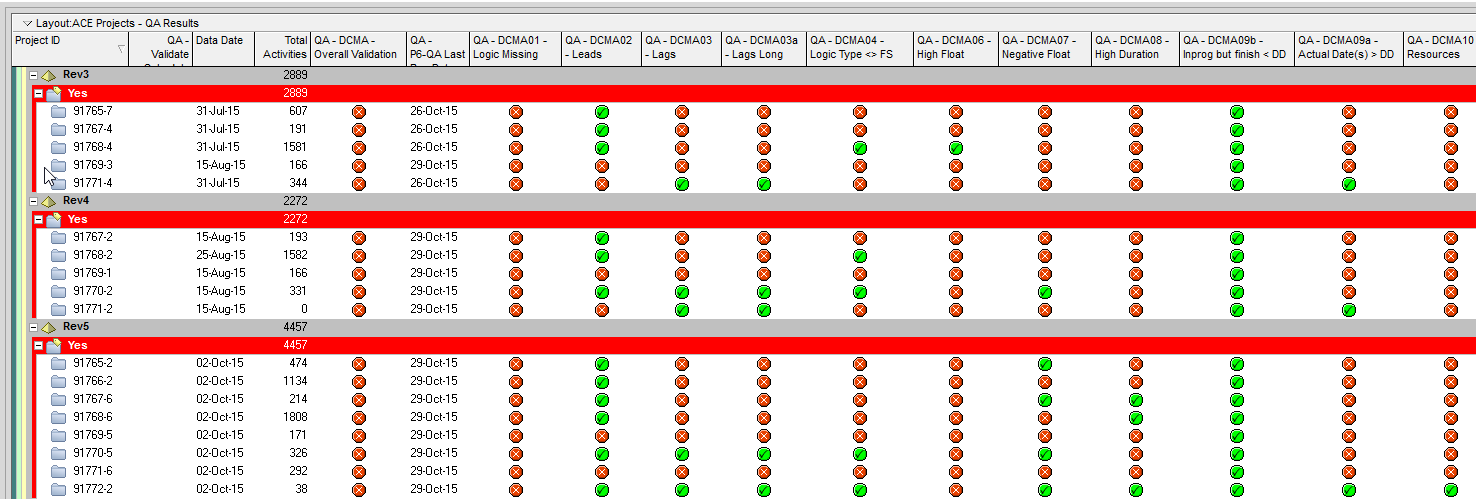IT Program Management with Primavera P6
An Example of P6 Mentoring, Coaching and Working Sessions

We have been working with a client using Primavera P6 for a large multi-year, multi-sprint IT project to revamp their customer loyalty program and overall customer experience. The team has been using P6-EPPM and have been aggressively putting together schedules for each key component of the program from infrastructure, to ERP, to integration testing and deployment.
This team is in large part new to P6, and they have been fighting to produce an overall program plan that has a continuous critical path so they can answer the usual question “when are we going to be done?”.
Shrinking the P6 Learning Curve
So to help guide them in their P6 learning, we have been using our P6-QA Tool and running it as-a-service (SaaS) to do a quick check on the progress of the schedules before our hands-on coaching sessions. In less than an hour, we ran P6-QA on over 5-10 projects making up the program, and then e-mailed the PDF reports to each PM to take a look at before our hands-on coaching sessions. We also gave our project controls lead some insight as to the progress the team was making since our last remote coaching session so she could see what each of the project managers were struggling with and what we needed to focus on with the team when we were on site.
Emerald Role - Mentoring, Coaching and working sessions
Our roles included mentoring and coaching. Every few weeks we would meet to give feedback on the schedules. We used P6-QA to help create a quick snapshot of how the schedule development was coming along. We can see in the below summary of the projects window that the users were getting better at leads and lags and getting rid of them but the missing logic was still hurting them and preventing them from being able to get a true critical path.

Hands-on Working sessions
We then did some onsite working sessions to get these schedules finalized for key stakeholder quarterly meetings. Now we produced our detailed reports in Microsoft Word with metrics and the detailed list of issues so we could work through it with the project managers face-to-face.
We started by addressing open ends. We found that a lot of the open ends were interface milestones between different departments and in many cases their was unclear ownership of these turnover points. We hit a big roadblock with the way the security was setup as well. The PMs were not allowed to do inter-project links, and only the P6 administrator was given these privileges. This was a very bad idea, and it could have easily been solved with a security setting allowing logic building between projects.
In other cases the project managers were not sure how to status the project because they were used to MS-Project and this works differently. So we went through the different statusing types and got these cleaned up and completed. We also identified a lot of duplicate tasks because of the lack of “sharing” - again because of the security settings, and we cleaned those up which really helped.
We made hunting down the open ends much easier by getting the PMs some standardized views and coaching the users on what they were looking at.
During the week on site working with the users, the most interesting thing occurred towards the end of the week, the project managers were really starting to see value in the schedule and getting to where they needed to go.
Moral of the story is - give your team the proper tools and coaching for success. After spending all that money on P6, it makes no sense to skimp on the training and coaching.
About the Author
Nicole Jardin, P.Eng. - CEO
Nicole’s drive for success came at a young age growing up in a family of eight competitive swimmers. As treasurer and president of her high school, one could also say that leadership skills came naturally. Her love of teaching and helping others also developed early as swim instructor and lifeguard while she was studying Building Engineering at Concordia University in Montréal. After graduation, Nicole worked for 6 years in a forensic investigative role on project dispute avoidance and claims resolution cases for Revay and Associates and High-Point Rendel. Nicole learned early on in her career just how critical strong project management was to ensure project and corporate success.
To learn more about Nicole please refer to her executive profile.